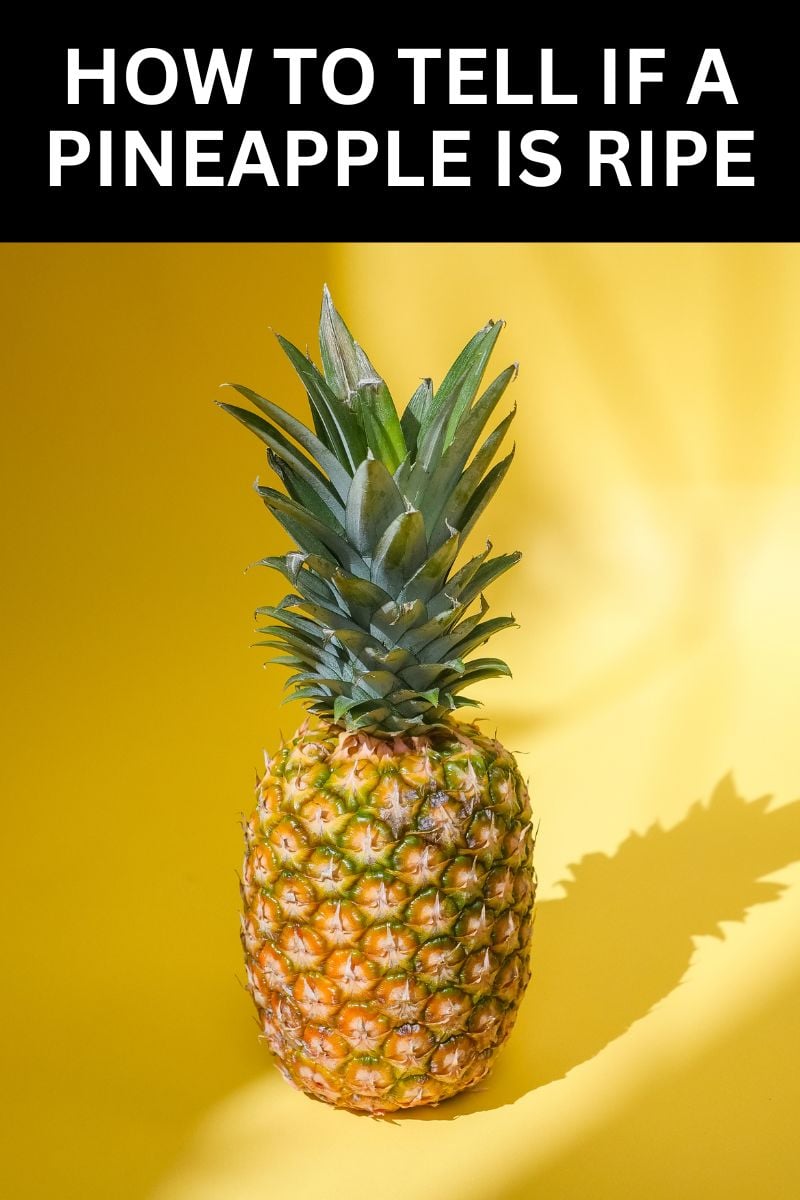Pineapples are tropical treasures packed with juicy sweetness and a wealth of nutrients. However, choosing a ripe pineapple can sometimes feel like a guessing game. No one wants to cut into a pineapple only to find it’s unripe and tart or overripe and mushy. Luckily, there are several tried-and-true methods to determine if a pineapple is at its peak of ripeness. In this blog post, we’ll explore ten ways to tell if a pineapple is ripe, ensuring that you enjoy this exotic fruit at its very best.
1. Check the Color
One of the most straightforward indicators of a pineapple’s ripeness is its color. A ripe pineapple typically has a rich golden-yellow hue from the base upwards. While some green can be present, especially towards the top, a predominantly green pineapple is usually unripe. The deeper and more uniform the yellow color, the sweeter the fruit is likely to be.
Tip: Be cautious of pineapples that are entirely dark orange or have reddish tints, as these may be overripe and starting to ferment.
2. Squeeze the Pineapple
Gently squeezing the pineapple can provide clues about its ripeness. A ripe pineapple should have a slight give when pressed—firm but not hard. If the pineapple feels too soft or mushy, it may be overripe. Conversely, if it’s rock solid with no give at all, it might need more time to ripen.
Note: Always use gentle pressure. Applying too much force can bruise the fruit, leading to spoilage.
3. Smell the Base
The aroma of a pineapple is a reliable indicator of its ripeness. Smell the base of the fruit (the end opposite the leaves). A ripe pineapple will emit a sweet, tropical scent. If there’s little to no aroma, the pineapple may not be ripe yet. An overpowering or sour smell could indicate that the pineapple is fermenting and past its prime.
Quick Test: If the fragrance makes your mouth water, it’s likely a good pick!
4. Look at the “Eyes”
The “eyes” of the pineapple are the small, spiky dots on its skin. As the pineapple ripens, these eyes become larger, flatter, and more spaced out. In unripe pineapples, the eyes are smaller and closely packed. Observing the eyes can help you gauge the fruit’s maturity.
Remember: Uniformity is key. Evenly developed eyes suggest even ripening throughout the fruit.
5. Examine the Leaves
The crown of leaves atop the pineapple can also offer insights. On a ripe pineapple, the leaves are green and firm but may have a slight wilt at the tips. Some people believe that if you can easily pluck one of the inner leaves, the pineapple is ripe. While this method isn’t foolproof, it’s one more piece of the ripeness puzzle.
Caution: Avoid pineapples with dry, brown, or shriveled leaves—they may be old and past their best.
6. Consider the Weight
Picking up the pineapple can tell you a lot. A ripe pineapple will feel heavy for its size due to its high juice content. Compare the weights of similar-sized pineapples; the heavier one is likely riper and juicier.
Pro Tip: Heft several pineapples to get a sense of their relative weights before making your choice.
7. Tap the Pineapple
Gently tapping the pineapple and listening to the sound it makes can help determine ripeness. A ripe pineapple will produce a dull, solid sound, indicating that the flesh is full and juicy. A hollow sound may suggest that the fruit is dry or unripe.
Technique: Use your knuckles to tap and keep the tapping light to avoid bruising the fruit.
8. Observe the Shape
The shape of the pineapple can also be indicative of its ripeness. A fruit that is more rounded and plump is often riper than one that is elongated or has a tapered shape. The roundness suggests that the fruit has fully developed and is filled with juice.
Insight: While shape alone isn’t a definitive indicator, it’s useful when combined with other signs.
9. Inspect the Bottom
The base of the pineapple is where the fruit ripens first. Check for any mold, soft spots, or discoloration at the bottom. A ripe pineapple should have a firm, golden-yellow base without any signs of spoilage.
Heads Up: A slightly sticky base may indicate that the pineapple is very ripe and should be consumed soon.
10. Time Since Harvest
If you’re buying from a local market or directly from a grower, ask when the pineapple was harvested. Pineapples do not ripen significantly after being picked, so knowing the harvest date can help you determine its ripeness. Generally, pineapples are at their best within a few days of being harvested.
Fact: Unlike some fruits, pineapples don’t continue to sweeten after picking, though they may become softer and juicier.
